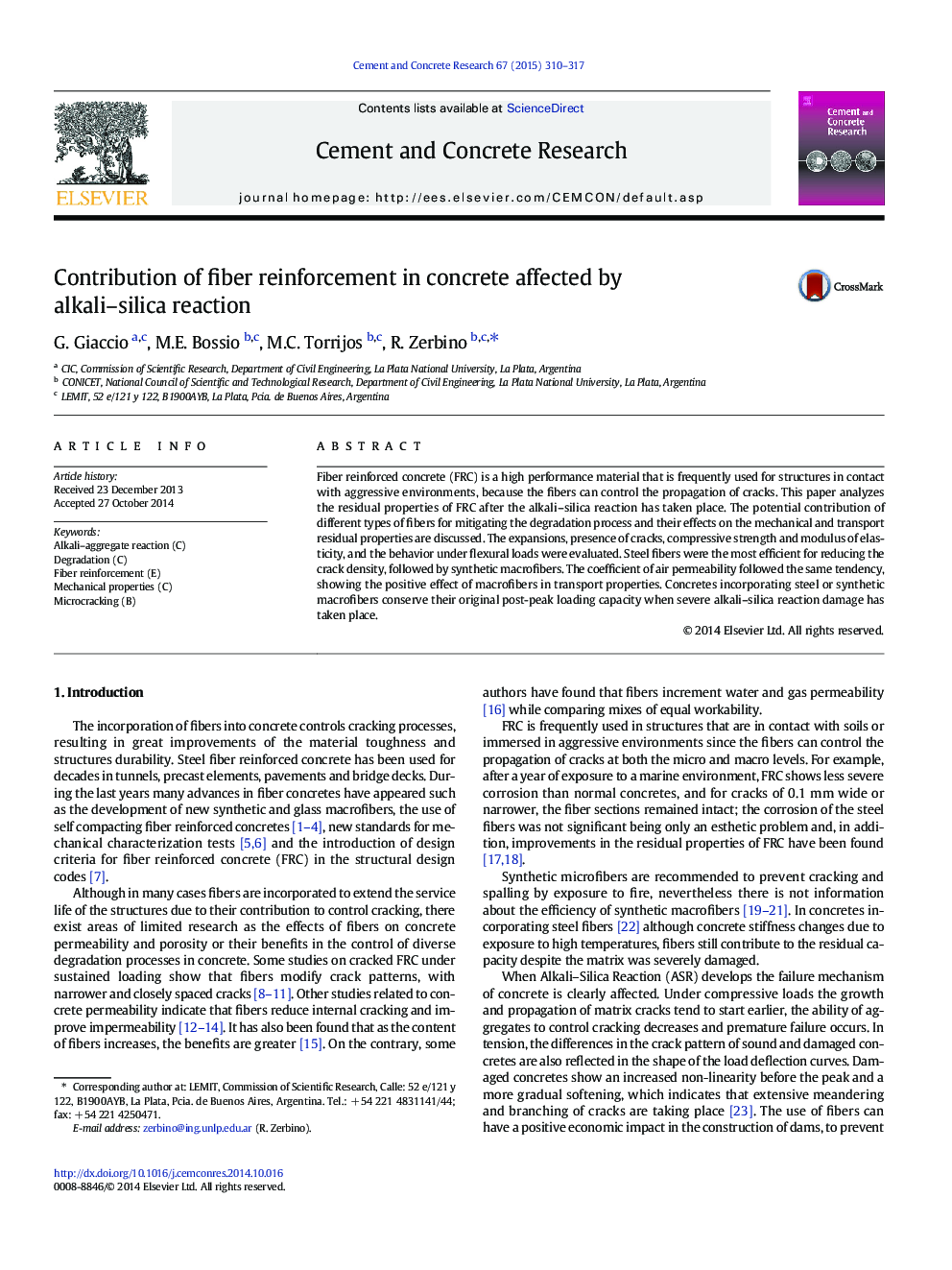| Article ID | Journal | Published Year | Pages | File Type |
|---|---|---|---|---|
| 1456225 | Cement and Concrete Research | 2015 | 8 Pages |
Fiber reinforced concrete (FRC) is a high performance material that is frequently used for structures in contact with aggressive environments, because the fibers can control the propagation of cracks. This paper analyzes the residual properties of FRC after the alkali–silica reaction has taken place. The potential contribution of different types of fibers for mitigating the degradation process and their effects on the mechanical and transport residual properties are discussed. The expansions, presence of cracks, compressive strength and modulus of elasticity, and the behavior under flexural loads were evaluated. Steel fibers were the most efficient for reducing the crack density, followed by synthetic macrofibers. The coefficient of air permeability followed the same tendency, showing the positive effect of macrofibers in transport properties. Concretes incorporating steel or synthetic macrofibers conserve their original post-peak loading capacity when severe alkali–silica reaction damage has taken place.
